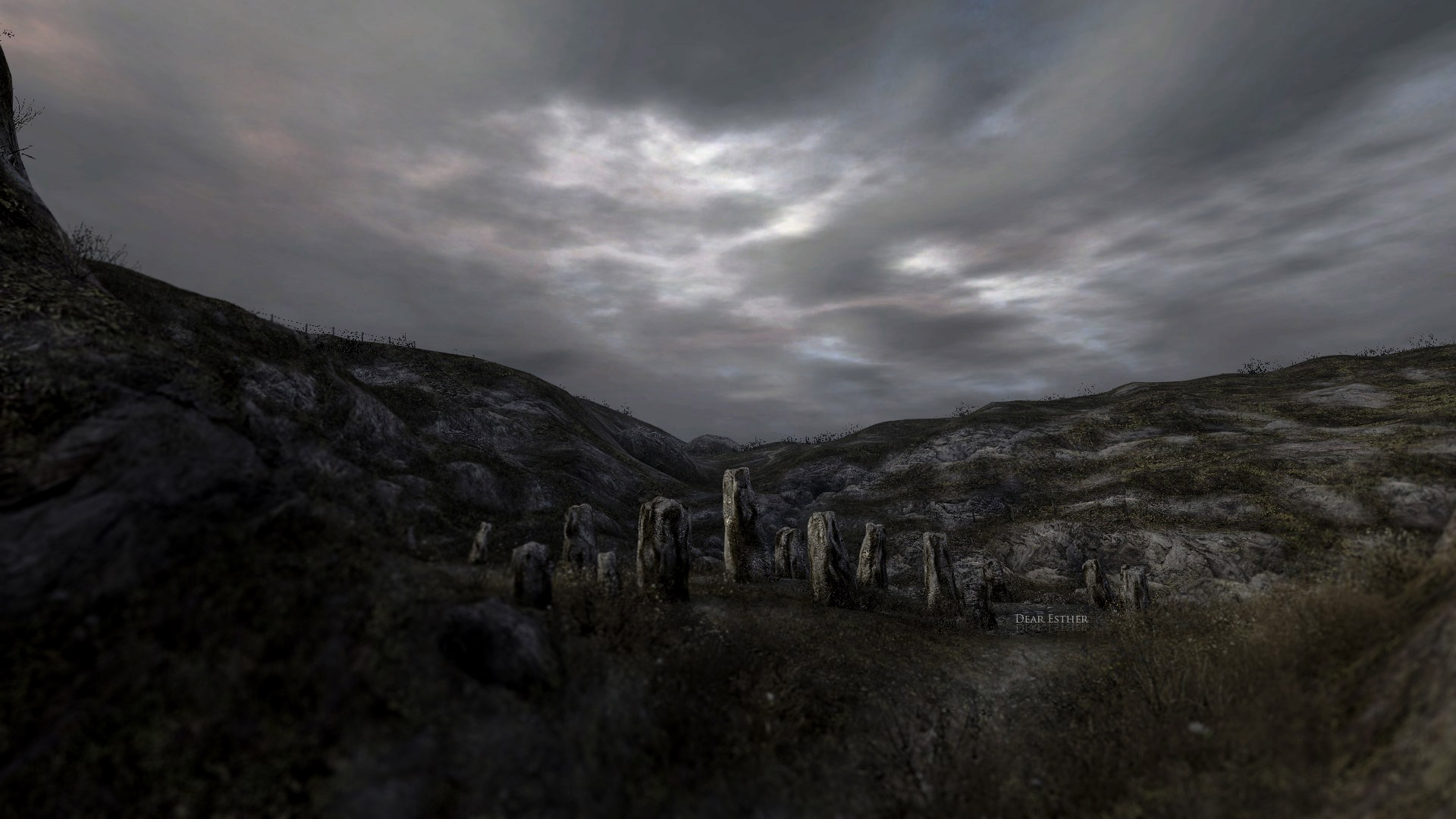

On the surface, the initial setup suggests that the whole game takes place on an unnamed island in the Hebrides, an archipelago of barren rocks off the coast of western Scotland, remembered to those that know of them for their stark beauty and harsh weather. In fact it might be argued that it's about the complete opposite of that. The truth is though that Dear Esther isn't about control.


Indeed, the term 'walking simulator', which many early reviewers coined as a form of denigration, is a very shallow label that has been slapped onto Dear Esther and other games sharing its features as a way to try and name the unnameable, placing it under control.

In this way, it bestrides the boundaries between media, leaving those disinclined to accept that some things cannot truly be categorized struggling for purchase. Dear Esther's 'goal' is to make players sit and think about the setting about the story and about what it all means to them. Perhaps the best counter-argument to this is that the experience isn't so much about finding an answer or achieving a goal as it is about seeing what you do when you realize that neither of those things exist. This is where a large part of the controversy surrounding Dear Esther stems from, since many argue that since it has no classically defined goals or plot, it cannot be referred to as a 'game'. Unreality is very much an unstated theme of the game's plot, which weaves together the strange sights and odd narration into a bizarre piece of post-modern story-telling that is less a progression of events from point A to point B and more of an effort to provoke introspection and specific feelings, like a piece of art. This complements the starkly-real yet subtly-unreal environment by leaving the player in a perpetual state of confusion as they struggle to find a way that everything they are seeing and hearing fits together. Rather, it is a collection of plot points which can be assembled in almost any fashion to produce a narrative of one's choosing. One of the first things that sets Dear Esther apart that it is not told as a linear story. Like everything from The Chinese Room, the experience and story are the meat of the material. The Landmark Edition is now the only version available, but as I stated, don't feel you're missing out on anything. It's a highly subjective piece of work, but for the sake of this equally-subjective review, I'll do my best to offer what I think.Īfterwards, if you're so inclined, you can go and pick the game up on Steam for just $9.99 (or less if it's a sale). What those are exactly has been discussed over and over, perhaps just as much as whether Dear Esther deserves the title of 'game' rather than say 'interactive art piece'. All in all though, the divide between new and old isn't worth discussing so much as the game's message and impact, which the Landmark Edition serves to highlight. The changes are minor, with most of the graphics receiving only subtle alterations and a few new lines of narration that were originally left on the cutting room floor serving to separate the two versions. Later redeveloped for commercial release by the developers, who had by then formed their own studio dubbed The Chinese Room, the controversy surrounding the 'game' has survived intact, all the way up to the release of this latest Landmark Edition, which serves as a sort of celebration of the game and the effects it had on the world indie developers.įrankly, there's not a huge world of difference between the original commercial release of Dear Esther and this new version. Released in 2008 to minimal fanfare, it soon garnered critical acclaim as word of mouth allowed it to gain recognition for its avante-garde approach to game design and storytelling. Dear Esther started as a free-to-play stand-alone modification for Half-Life 2.


 0 kommentar(er)
0 kommentar(er)
